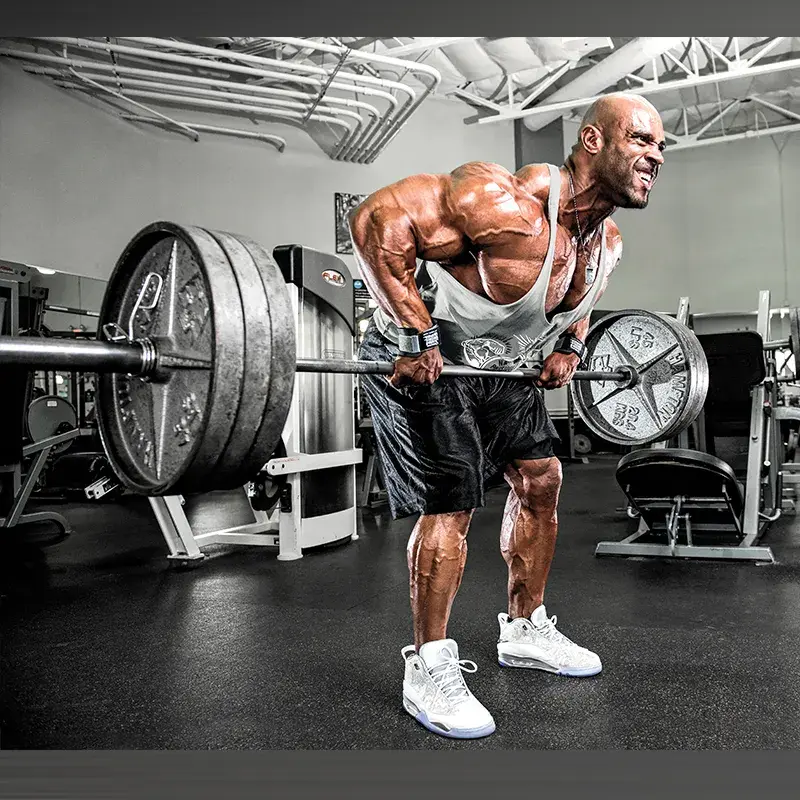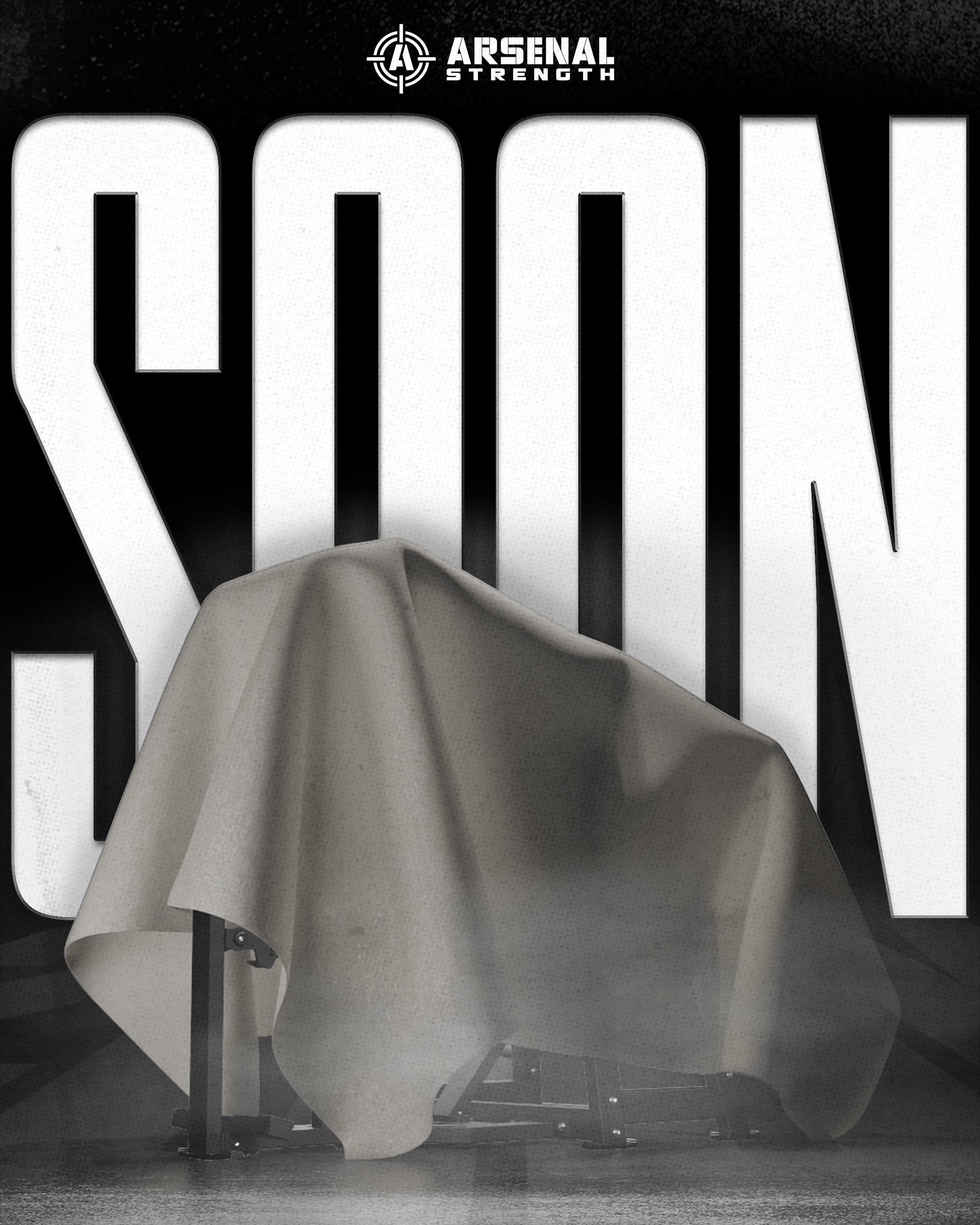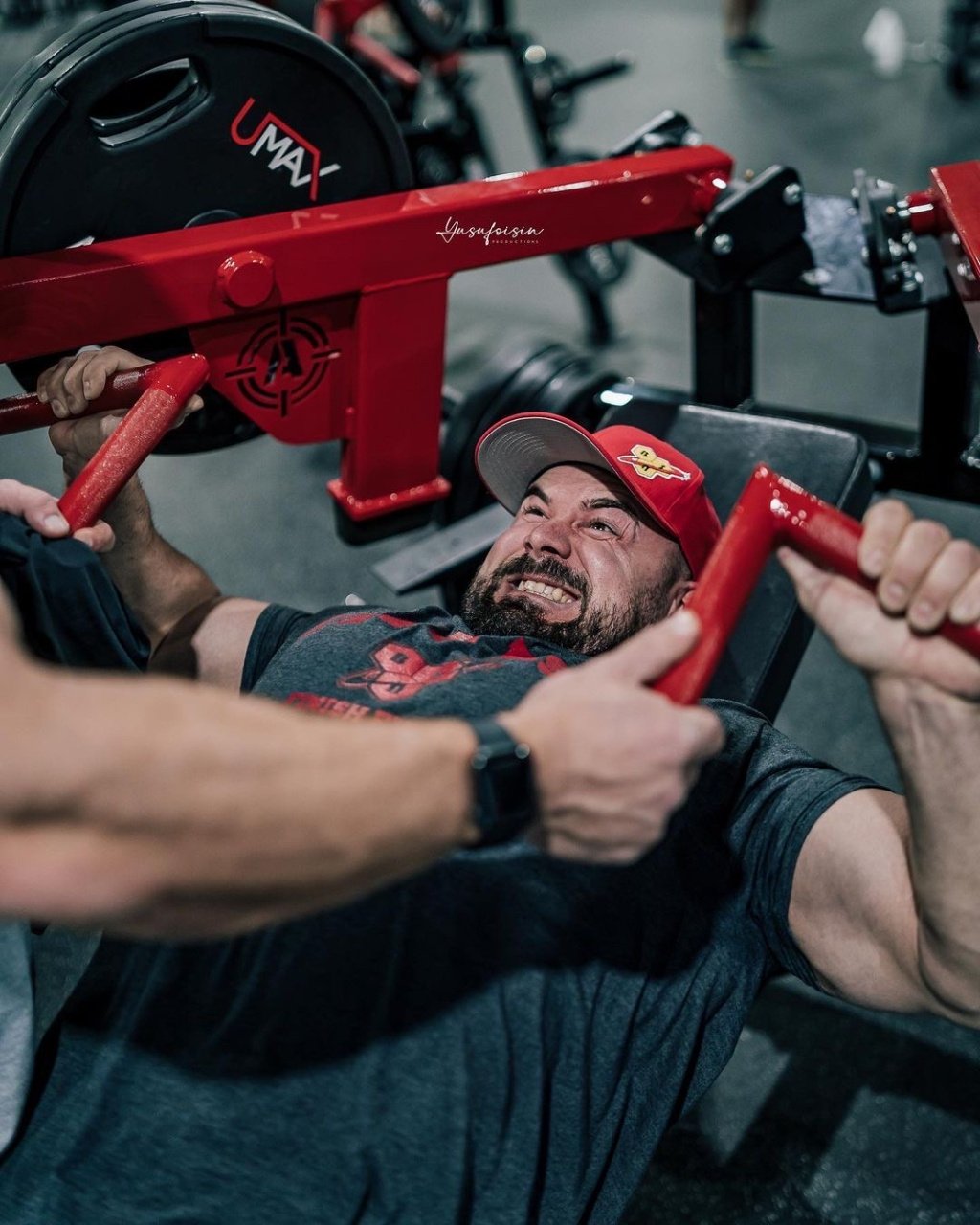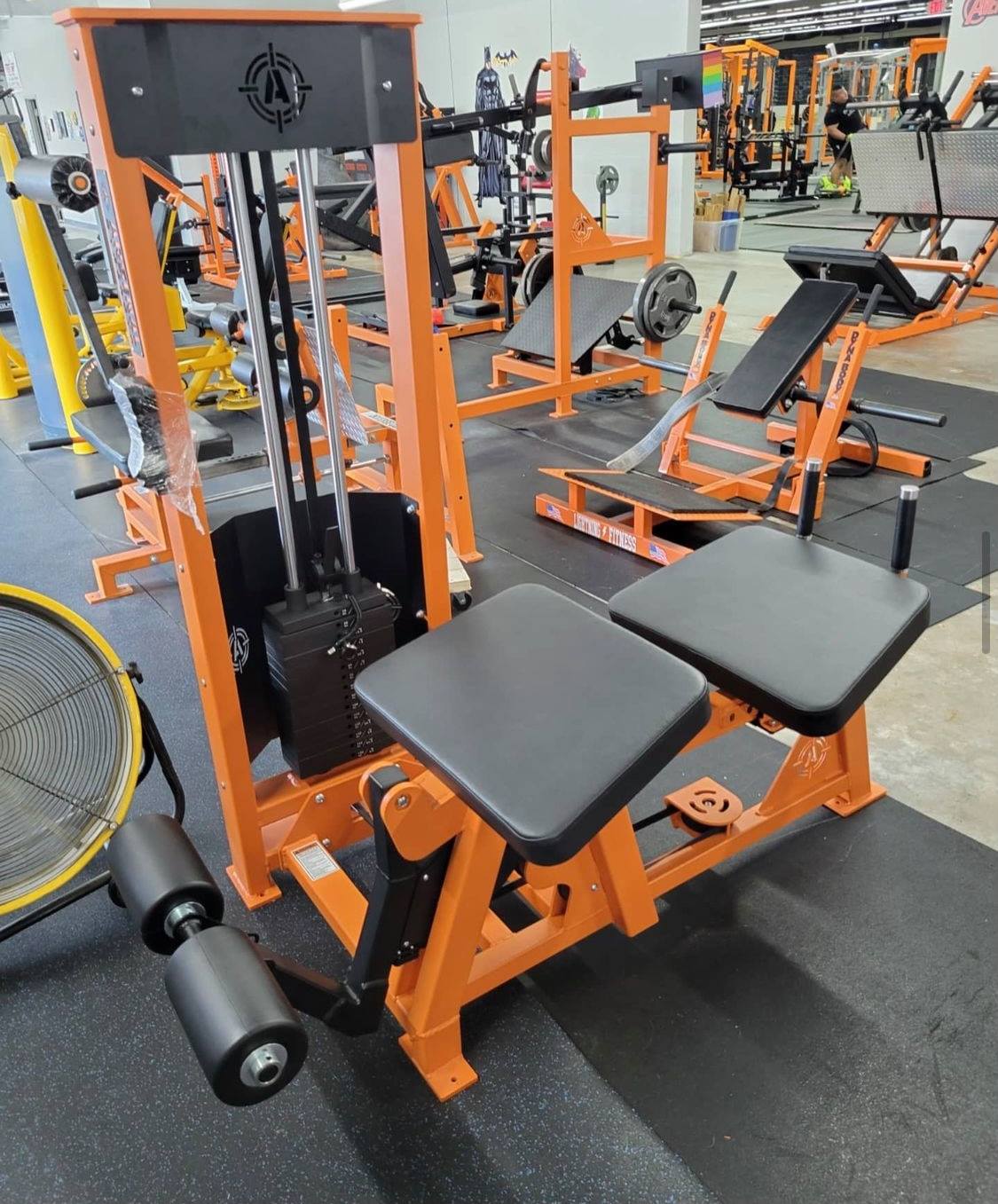Bent Over Row vs Barbell Row The Ultimate Back Exercise Showdown
Facing the bent over row vs barbell row dilemma? This no-nonsense comparison enlightens you on which row reigns supreme for back strength, depending on muscle targeted and potential strain on the body, giving you the clarity to choose wisely for your next workout.
- The bent over row demands serious spine mojo (goodbye lower back slacking), nudging your torso to parallel with the floor, while the barbell row offers a more forgiving angle – easier on your lumbar!
- Your back muscles get fully activated with both exercises. Bent over rows favor back width goals, whereas the barbell row is your ticket to full back destruction – think thickness and density.
- Variety is the key to back day! Tweak your torso tilt, grip girth, or rowing rig to keep your muscles guessing and your workouts less yawn-worthy. Remember, a change in angle can mean a whole new muscle tangle.
Exploring the Mechanics of Bent Over Row vs Barbell Row
The body’s inclination significantly impacts the distinction between a bent over barbell row and a standard barbell row. Picture this: you stand with your feet set apart at shoulder width, knees subtly flexed, then hinge from the hips until your upper body is almost in line with the floor—that’s how you get into position for performing a bent over row.
On the flip side, when executing a regular barbell row, your starting stance mirrors that of the bent-over version but features an upper body inclined slightly more upright than in the full bend-over variation. Both versions utilize hip hinging to activate relevant muscles effectively while preserving balance.
Here’s where it gets interesting: due to its close-to-horizontal torso alignment during performance, engaging in a bent over row requires considerable stabilization strength from one’s spine which intensifies pressure on their lower back. Conversely, because of its less pronounced angle forward, utilizing barbell rows can reduce some strain on one’s lower back yet still concentrate effort predominantly on those critical upper back muscles.
It follows that choosing either exercise should reflect individual fitness goals alongside consideration of existing strength within someone’s posterior chain—particularly regarding their spine stability and health.
Starting Position and Spinal Alignment
Maintaining the correct starting position and keeping your spine aligned are key things to remember and are essential for activating the appropriate muscles and avoiding injuries during both exercises. When performing a bent over row, it’s important to position your hips beneath your shoulders while slightly bending at the knees as you grasp onto the barbell. This resembles trying to find out how much you can lower yourself without a limbo stick involved. The objective is to keep your upper body stable and maintain a constant angle by ensuring that throughout this exercise, your back remains level and straight.
During a barbell row, since the torso isn’t quite parallel with the floor, there’s somewhat more flexibility in terms of positioning. Nevertheless, maintaining an upright back is still paramount. Regardless of which variation of rowing exercise one selects, remembering that proper posture—a firm straightened back from start—is critical for safely transporting oneself down ‘row avenue’.
Hip Hinge Dynamics
We’re going to explore the mechanics of executing a proper hip hinge, which is paramount for those who enjoy Romanian deadlifts and will be thrilled to learn that it’s also foundational in both bent over rows and barbell rows. The action involves pushing your hips backward while maintaining a neutral spine position. This technique plays an essential role in avoiding injuries and correctly engaging the intended muscles during these rowing exercises.
Consider this analogy: preparing for rows should resemble the concentration needed to balance on one foot. Your core muscles must be engaged constantly with plenty of micro adjustments —this means keeping them tight throughout the setup process to ensure your torso has sufficient stability and support. So keep in mind, mastering an effective hip hinge isn’t just about how it feels. A strong core is a vital component of performing barbell rows successfully.
Stabilizing the Core and Lower Back
We will now turn our focus toward the critical aspect of maintaining stability, specifically within the core and lower back region. When executing a bent over row, there’s an important concept to consider: ‘proximal stability for distal mobility.’’ This sophisticated term simply emphasizes that having a stable core amplifies your limbs’ capacity to move effectively and produce power. To ensure this kind of stability while performing the exercise, one must:
- Engage tension through their feet
- Push their knees outward
- Keep their spine in neutral alignment
- Brace their abdominal muscles
These steps are fundamental for preserving balance throughout the movement.
It’s imperative to activate your feet from below while also laterally working on glute activation and synchronizing it with shoulder blade engagement — all contributing greatly towards stabilizing both the core and hips during performance of this exercise regime. In essence, as you fold forward in pursuit of nailing down that impeccable row form, remember how crucial it is to maintain solidity within your body’s center – particularly around your abdomen area & into those tireless supporting structures spanning across our lumbar territories—rest assured knowing each muscle group involved reaps its due benefit!
Key Differences in Muscle Engagement
Having examined the technique, let’s explore how muscle activation varies. The bent over row exercise engages a broad spectrum of muscles such as:
- Mid-lower traps
- Rhomboids
- A portion of the latissimus dorsi (lats)
- Lower back muscles
- Upper traps
- Rear deltoid muscles
On the other hand, when performing barbell rows, there is a more pronounced emphasis on the upper trap engagement while putting relatively less stress on both lower back and lats. The major muscle groups worked by bent over rows are your lats, rhomboids, trapezius (traps), and rear delts, which contribute to increasing your back’s width. In contrast, barbell rows tend to focus primarily on building up thickening effects for the same key areas: Latissimus Dorsi, Pectorials Major, and the Rhomboideus muscles (major and minor). Selecting exercises based on what areas you wish to develop in terms of either girth or breadth can help sculpt your training regimen toward fulfilling your particular fitness aspirations.
Primary Muscles Worked in Bent Over Rows
The primary muscles targeted by the bent over rows exercise encompass:
- Latissimus dorsi
- Rhomboids
- Teres minor and major
- Middle and lower traps
- Rear deltoids
Consider this lineup as the elite group for your back. By maintaining a close grip on the barbell and drawing it toward your belly button, you intensify the engagement of your lower legs, which helps to broaden your back.

Varying your hand positioning can shift muscle activation. Using a narrow grip places greater emphasis on extending the shoulders and activates muscles such as latissimus dorsi, teres major, and posterior deltoid more intensely. A wider grip focuses on horizontal shoulder extension that works out the infraspinatus, supraspinatus, posterior deltoid head, and teres minor more vigorously. In tandem with these main activations are secondary muscular engagements involving spinal erectors, rear deltoids, biceps, forearms, core, hamstrings, and glutes — collectively enhancing strength in back muscle groups and boosting core stability. Essentially providing a comprehensive workout experience for the overall body.
Barbell Row's Unique Pulling Power
The barbell row is renowned for its unique capacity to develop pulling strength, actively engaging a host of muscles including the rhomboids, latissimus dorsi (lats), middle and lower traps, as well as the posterior deltoid. It also recruits synergistic muscle groups like the biceps, teres minor, brachialis, and brachioradialis in conjunction with erector spinae. Employing an underhand grip can heighten engagement of both the lower portions of the latissimus dorsi and erector spinae muscles to more profoundly challenge your lower back.
When you execute rows incorporating a shoulder abduction angle ranging from 90-60 degrees, this places greater emphasis on shoulder horizontal extension. Such positioning primarily works out various key upper body muscles including:
- The rear head of the deltoid
- Teres minor
- Infraspinatus
- Supraspinatus
Henceforth it’s clear that not only does performing rows using a barbell amplify your pulling prowess, but it simultaneously stimulates multiple muscular regions contributing to an expansive workout experience for strengthening one’s back.
Row Variations and Their Impact on Your Workout Routine
Workout routines can sometimes become monotonous. Introducing various row exercises is an excellent way to rejuvenate your fitness program. Modifying how much you bend your torso during the bent-over row can change which muscles are engaged more intensely. Bending over more significantly fires up the lower back and latissimus dorsi.
You could incorporate different techniques such as:
- adopting a reverse grip
- utilizing dumbbells instead of barbells
- lying on an incline bench for the bent-over row
- altering your grip width or stance in a barbell row
To isolate specific muscle groups or adjust exercise intensity.
Diversifying your routine with assorted rows could help overcome workout boredom while also enhancing muscular development through varied challenges. Don’t hesitate to switch things around and experiment with new movements! Here’s a selection of rows you might want to introduce into your regimen.
- Bent-over barbell row
- Seated cable row
- One-arm dumbbell row
- Inverted bodyweight row
- T-bar machine or landmine setup
Exploring these options may lead you to discover an exercise that becomes central to your training arsenal.
Neutral Grip vs. Overhand Grip
There are multiple grip choices available when performing rows, such as:
- Utilizing an overhand grip on bent over rows will chiefly target the upper back muscles, including the trapezius, rhomboids, and rear deltoid muscles.
- Opting for an underhand grip primarily involves the biceps and latissimus dorsi in the movement.
- Modifying how wide or narrow your hands are placed can influence which shoulder movements occur during a row and subsequently alter which muscle groups receive more focus.
A broader placement of hands could potentially enhance the activation of the latissimus dorsi. On the other hand, employing a neutral grip using dumbbells may aid in rectifying muscular imbalances because it provides a more extensive range of motion. This method can be executed one side at a time to promote wrist comfort relative to traditional barbell rows. Hence, whether you prefer adopting a neutral, overhand, or underhand approach towards your grasp, there is surely an adaptation of row that aligns with your specific workout objectives.
Incorporating Row Variations into Your Routine
Let’s delve into how to seamlessly integrate these row variations within your exercise regimen. Different rows can hone specific back muscles, bolstering overall strength and sculpting in the area. When plotting out a fitness plan, it’s wise to complement a shoulder horizontal extension-focused barbell row with exercises involving vertical pulls, and pair up those that emphasize shoulder extension with movements entailing shoulder horizontal or rotation.
Take into account adding these types of rows.
- Bent-over barbell
- Upright barbell
- Single-arm dumbbell
- Seated cable
- T-bar
- Inverted
By weaving various row variants into your training sessions, you stand to more effectively engage diverse muscle groups in the back for comprehensive strengthening routines.
Consider staggering upper-body movements like different bars’ rows alongside lower body drills such as squats or deadlifts for balanced workout progression Merging moves like overhead presses with inverted versions of bars’ rows could concurrently work on both shoulders and back regions for an inclusive upper-body program. Thus instead of monotonously repeating one form of exercise, switch things up by incorporating multiple iterations of bent over barbell or t bar type workouts ensuring dynamic sessions filled with variety.
Technique Tips for Maximizing Gains and Reducing Injury Risk
It is our collective goal to maximize muscle growth while keeping injury at bay, right? That being said, there are some technique insights that can assist you in achieving just this. Initiate your practice of bent over rows using a bar with no additional weight attached. This approach allows for perfecting the form before progressing with added load. The exercise known as the barbell row not only enhances core strength, which supports spinal stability, but also has positive impacts on other exercises and everyday tasks.
By performing barbell rows, you fortify hip hinge maneuvers – essential movements for power generation across various sporting disciplines and workout routines. Hence, regardless if you’re new to exercising or an experienced athlete, these strategic tips could provide significant improvements in your execution of rows.
Achieving Proper Form in Bent Over Rows
Let’s hone in on perfecting the technique for bent over rows. To perform this exercise effectively, it’s crucial to keep your hips, shoulder blades, and core stable to enhance awareness of your body position and stability of posture. When you execute these rows with a 0-30° angle in shoulder abduction, you emphasize movements that are dominated by shoulder extension—this zeroes in on the lats and key muscles of the upper back like teres major. Adding upright row exercises into your routine will also aid in bolstering the strength of those back muscles.
It is vital as well to maintain a flat back while preventing rounded shoulders during this movement. Doing so can reduce risks associated with back injuries. Activating your lats before initiating the lift within each bent over row session enhances muscle engagement along with control over motion execution. So bear in mind: when performing bent over rows—a flawless form is imperative!
Mastering the Barbell Row for Better Performance
Moving on to the barbell bent over rows, it’s important that you maintain a strong and stable torso throughout the exercise to ensure proper form and reduce the risk of injury. You should pull the barbell towards your stomach with your elbows moving back in order to engage your back muscles effectively. The design of this exercise enables progressive overload, which is vital for increasing strength by conveniently adding more weight.
As you execute bent over rows with a barbell, keep your gaze slightly ahead of where your feet are planted. This will help align both head and neck with your torso, thereby promoting a neutral spine while performing the row. When refining proficiency in these types of rows using a barbell remember—adhering strictly to correct technique is crucial.
When to Choose Bent Over Rows Over Barbell Rows (and Vice Versa)
Having explored the execution and techniques of these workouts, we should now consider when to favor one exercise over another. Your decision to select bent over rows or barbell rows should align with your unique fitness objectives and the particular back muscles you wish to enhance.
For those prioritizing enhancements in hip flexibility and strength in their lower back, bent over rows are typically recommended. Conversely, individuals seeking a targeted workout for their upper back muscles while lessening the load on their lower back may find barbell rubbed.
For Building Posterior Chain Strength
Should you aspire to enhance the strength of your posterior chain and boost hip flexibility, consider making bent over rows a staple in your workout routine. The exercise activates muscles throughout the entire posterior chain—encompassing hamstrings, glutes, and lower back—which is essential for better athletic prowess when contrasted with other row variations.
What’s more, barbell bent over rows permit you to increase weight progressively, which not only challenges your whole body but also bolsters grip strength significantly. To fortify your body’s posterior chain effectively, it’s time to embrace this potent form of row!
For Focusing on Upper Back Muscles
Conversely, if enhancing your upper back strength while mitigating stress on the lower back is your objective, then barbell rows should be your exercise of choice. They are exceptionally effective at targeting key muscles in the upper back area, which include:
- The latissimus dorsi
- Rhomboids
- Trapezius
- Posterior deltoid muscles
Incorporating a wider grip during these rows can increase activation of certain upper back muscles like the rhomboids and trapezius. This adjustment to the exercise allows for more focused development of upper back power. When prioritizing upper back fortification, turn to barbell rows as they serve that purpose admirably.
Advanced Techniques: Pendlay Row and Beyond
Prepared to advance your rowing techniques? Let’s explore some advanced rowing techniques, starting with the Pendlay row. This exercise is performed with a strict horizontal back position, parallel to the ground, aiming for explosive power in the pull by lifting the bar from a dead stop on each rep.
Unlike traditional rows which involve a continuous motion, Pendlay rows have the following characteristics:
- Each rep starts from a dead stop on the floor
- Emphasizes explosive strength and power
- Allows for greater loads to be used due to the start from a static position
- Focuses more on maximizing explosive strength and minimizing momentum use compared to traditional barbell rows.
Athletes may find this exercise beneficial in improving their explosive lifting capabilities and potentially enhancing performance in powerlifting movements.
The Pendlay Row: A Step Forward in Rowing Exercises
Diving deeper into the Pendlay row, this exercise is recognized for demanding precise technique by initiating each rep from a stationary position on the floor. The purpose of this approach is to:
- limit involvement of the posterior chain
- stimulate explosive strength starting directly off the floor by eliminating momentum
- intensify stress on specific muscles beyond what traditional rows offer
- enhance flexibility
- eradicate ‘sticking points’ through its comprehensive range of motion.
Nevertheless, it can be difficult to hoist significant weight with the Pendlal row because it requires beginning anew from a halted state with every repetition. If you’re up for an elevated challenge and eager to advance your proficiency in rows, incorporating Pendlay rows into your regimen could provide just that opportunity.
Exploring Other Rowing Innovations
Nevertheless, the Pendlay row is merely one option among numerous sophisticated row variations. Alternative exercises like gorilla rows, seal rows, and the dumbbell deadlift transitioning into a bent over row expand upon conventional back training routines by introducing diverse movements. When performing these rows, combining shoulder extension with horizontal shoulder extension at a 45° angle of abduction can activate muscles across both sagittal and transverse planes for complete development of the back.
Avoid confining your exercise regimen to a single movement—delve into different types of rows to maintain diversity in your workouts and enhance their effectiveness.
Addressing Common Concerns and Misconceptions
Let’s address some prevalent concerns and misunderstandings about these exercises. There is a false belief that performing bent over rows WILL lead to lower back pain. On the contrary, when executed with proper form, bent over row exercises can enhance posture and strengthen trunk stability, which may help alleviate lower back discomfort. To minimize injury risks during bent over rows, it’s critical to maintain a straightened back and avoid letting the shoulders slump forward.
There’s another mistaken idea that barbell rows are categorically more effective than t-bar rows because they engage a wider range of muscle groups. The benefits of these exercise types should be judged based on individual fitness goals and personal capabilities. So whether you opt for barbell or t-bar variations of the row exercise does not make one unilaterally superior—effectiveness is determined by what aligns best with your unique training targets and physical condition.
Integrating Rows with Other Back Exercises
Integrating rows with other exercises can result in a more complete and balanced training program for your back. Here are some pairings to consider.
- Pull-ups: These target the upper posterior chain muscles exceptionally well and when combined with rows, they contribute to overall development of the back muscles.
- Supersetting bent-over ventral rows with pull-ups: This duo provides an intense workout that varies stimulation across different areas of the back.
- Merging dumbbell rows and push-up routines: By doing this you activate both chest and dorsal muscles effectively.
- Combining overhead presses alongside inverted rowing movements: Such pairing is great for working out both shoulders and upper dorsal region.
Integrating these combinations into your exercise routine will lead to a comprehensive strengthening session targeting numerous aspects of your rear physiology.
By combining bent-over dorsiflexion pulls (rows) with vertical pulling motions (pull-ups), you subject your dorsum muscles to diverse angles which results in all-encompassing muscular engagement. Put together unilateral pulls like dumbbell varieties with frontal plane focused activities such as face-pulls achieves a harmonious growth pattern including various regions such as lateral muscle groups along spine’s aspect (lats) and postero-lateral shoulder parts (rear deltoids). Rotate through these varied practices during workout regimens for an extensive yet balanced enhancement of every segment within one’s postural myofibril network, keeping each movement interesting while also challenging all necessary muscular components thoroughly.
Indeed, we’ve given our intellectual prowess a robust workout by thoroughly examining the realm of bent over rows and barbell rows. Delving into their execution, we’ve recognized how they activate various muscles and have learned to weave different row variations into our exercise regimens for peak effectiveness. We’ve dispelled some prevalent myths while offering advice to amplify progress and minimize injury risks. So whether your goal is bolstering posterior chain strength with bent over rows or concentrating on fortifying upper back muscles through barbell rows, remember maintaining proper technique and tuning in to what your body tells you is paramount. Fitness ultimately boils down not to surpass others but to transcending one’s former self.
Frequently Asked Questions About Bent Over Row Vs Barbell Row
What's the main difference between bent over rows and barbell rows?
The real kicker is the torso angle and spinal alignment. Bent over rows demand a horizontal torso, while barbell rows go for a less acute angle with the upper body.
So, it’s all about that positioning, baby!
Which exercise is better for improving hip mobility and lower back strength?
Rows, specifically bent over rows, are essential for enhancing lower back strength and increasing hip flexibility.
Get ready to perform rows and pave the path to a stronger back!
Which grip is best for activating the upper back muscles in bent over rows?
Utilize an overhand grip when performing bent over rows to effectively engage and strengthen the muscles in your upper back, ensuring you achieve the desired outcomes!
What's the benefit of the Pendlay row?
If you’re aiming to enhance your explosive power and strength, the Pendlay row is an excellent choice because every repetition begins from a complete stop on the floor.
For those looking to take their strength training up a notch, incorporating this row variation into your routine is well worth considering!
How can I incorporate row variations into my workout routine?
Switch up your grip, grab some dumbbells, try an incline bench, and mix in other exercises for a well-rounded row variation workout. It’ll keep things interesting and target different muscles.
So, time to row your way to a stronger you!
Additional SMith Machine & Bent Over Row Resources:
ARSENAL STRENGTH SMITH MACHINE
Back Training Featuring The Flex Lewis






